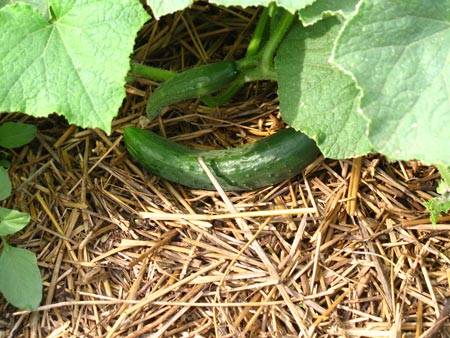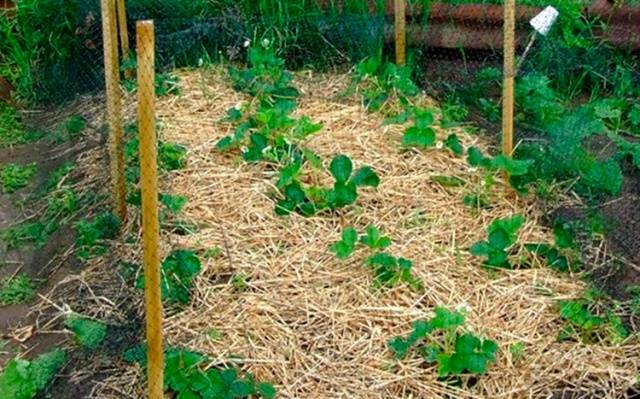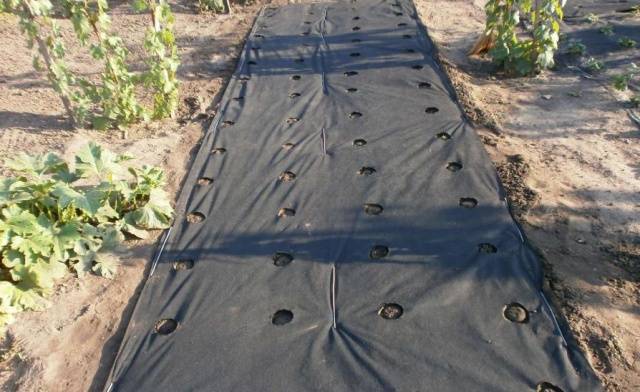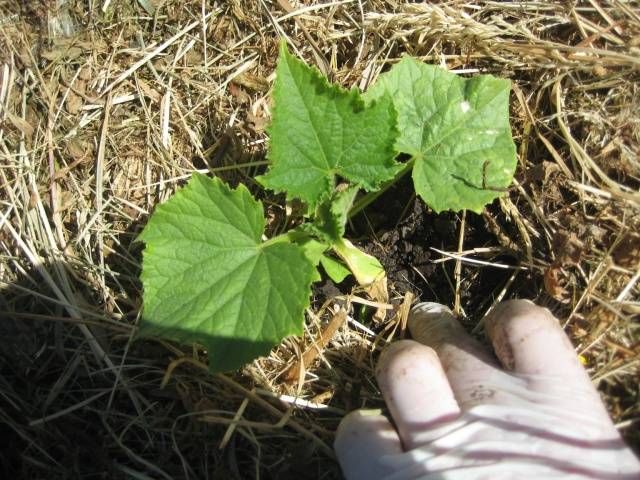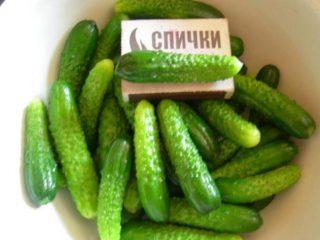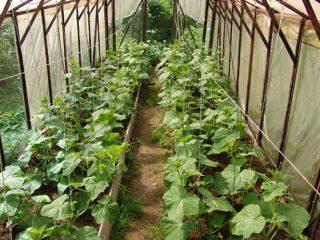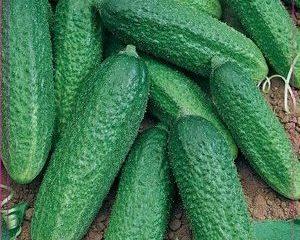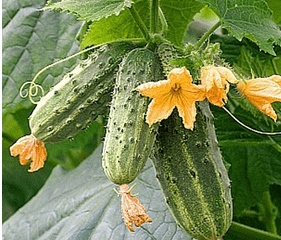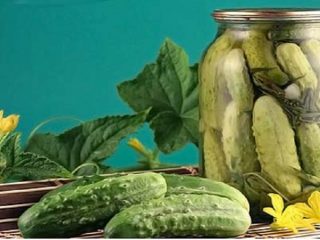Content
Mulching cucumbers in a greenhouse is one of the important conditions for a rich harvest. This procedure allows you to reduce labor costs and facilitate the process of caring for the cultivated crop. Mulching improves the quality of the soil and the quantity of harvested crops. This technology can be used when growing cucumber seedlings both in open and closed ground.
Why is it recommended to mulch the soil in cucumber beds?
Summer residents often neglect mulching, citing the uselessness of this method. But this is a misconception, since many people know absolutely nothing about the benefits of this procedure. Most often, their actions are aimed at destroying all organic matter formed on the earth. However, the lack of organic additives contributes to soil compaction and a decrease in the amount of minerals in it. As a result, to increase the fertility of the soil, constant moistening and loosening is required.
Constant watering leads to hardening of the soil; moisture from open areas evaporates much faster. If you don’t grow any crops in such places, they quickly become overgrown weeds. The procedure of mulching the soil helps to overcome these problems.The quality of mulch and its quantity can lead to different reactions from plants: either good development and a rich harvest, or a depressed state and a small number of fruits.
The mulching procedure helps:
- improve ventilation of the surface layer of the earth, allowing oxygen to freely penetrate to the roots;
- reduce the frequency of watering and its quantity, since mulch retains moisture from intense evaporation;
- reduce the frequency of loosening, since the earth does not harden and excess moisture does not stagnate in the soil;
- improve soil quality - organic mulch is an additional source of nutrients necessary for normal plant development;
- stop regularly digging up the area - this procedure can be replaced by loosening, since the soil under the mulching material is soft;
- reduce the number of weedings, because mulch prevents weeds from growing, preventing weed seeds and roots from getting from the lower layer of soil to the top;
- reduce the ripening period of fruits by about a week and a half;
- promote the cultivation of cleaner fruits, eliminating their rotting and spoilage;
- maintain the optimal temperature for crop development.
Cucumbers can be mulched with fine straw; it is not forbidden to use hay or dried small grass. It is important that the organic material used is free of inflorescences and seed pods to prevent the growth and development of weeds. The mulch should be uniform, without any traces of rot. It is worth choosing a high-quality mulching material without an unpleasant rotten odor.
Mulching stages
Growing cucumbers using mulching technology is carried out in several stages:
- Planting of plants in the ground must be carried out according to all the rules, which include preliminary cultivation of seedlings, their preparation for planting in the ground and direct transplantation to a permanent place. When growing cucumbers in mulch, it is important to make the row spacing and paths between the beds sufficiently wide. The seedlings are planted in prepared holes and watered with warm water, all weeds growing in the beds and between the rows are removed, and the top layer of soil is leveled.
- Having decided on the mulching material, lay it on top of the formed row in an even layer. In this case, it is necessary to leave the area near the sprout open. You can mulch only the rows, leaving the row spacing free. It is better to cover the entire bed with mulch to reduce the number of weeds in the future. The depth of the mulch should be at least 3 cm. It is important to ensure that the mulch lies in an even layer over the entire surface, without forming gaps. The laid out material does not need to be crushed or watered. The mulch must be moistened once to begin the composting process.
- After organized work, crop care is carried out as usual: timely watering, weed control, periodic checking of the integrity of the layer. It is sometimes worth lifting the layer and checking the soil for the presence of mole crickets or moles. If pests are detected, certain measures must be taken immediately. When mulching beds in a greenhouse or open ground, there is no need to loosen them, and the number of weeds is reduced.
Mulching technology is used at the beginning of the summer season, when the soil is well warmed up. Before laying out the mulch layer, the soil must be loosened well and all weeds removed.Organic material distributed according to all rules is usually completely processed by the beginning of autumn.
If at this moment there are any plant residues on the soil in the open ground, then you should not remove them. In a greenhouse, cleaning is a little more complicated: you need to remove all the top layer of soil and mulch if any signs of disease are detected. If there are no diseases, the soil can be left in the greenhouse for re-growing.
What raw materials to choose for mulching
Cucumbers in a greenhouse can be mulched with a large layer of material at once. Mulch needs to be updated less frequently than when growing crops in open ground. This is due to the fact that the process of composting outdoors is much faster. Both organic and inorganic material can be used for this crop. You can purchase synthetic coating and non-woven material.
Fresh grass should not be used as mulch, as it increases the likelihood of rot on plants and the appearance of slugs.
To mulch cucumbers you can use:
- Black perforated film. It is spread on the prepared soil until the crop is planted. First, holes are made in it into which the sprouts will be placed. The only drawback of this method is the dark color, which contributes to overheating of the soil during high solar activity. In this case, you can lay white material on top of the black film.
- Transparent polyethylene can first be used to create a greenhouse effect so that the sown seeds sprout faster. After the shoots emerge, holes are carefully made in the film.The film allows you to minimize the risk of weeds and improve the conditions for growing cucumbers.
- If peat, straw, and hay are used, then the seedlings are not deeply rooted. Failure to comply with this condition can lead to blackleg damage, which will not be easy to get rid of. To mulch cucumbers, you can use materials such as peat, fine straw, sawdust, pine needles, and fallen leaves.
Cucumber plants love moisture very much; they are sensitive to the quantity and quality of watering. Under unfavorable conditions, the sprout moves from the stage of growth and development to the stage of fruit formation in a short period. Under unfavorable conditions, the fruiting time decreases and the quality of the fruit deteriorates. The use of mulch helps to avoid such consequences.
Organic material allows you to retain moisture, which the capricious crop needs. In general, it creates favorable conditions for the development of strong and healthy plants, increases the fruiting period and improves the quality of the fruit. For mulching, it is preferable to use organic matter, but if it is not available, you can purchase inorganic material.

